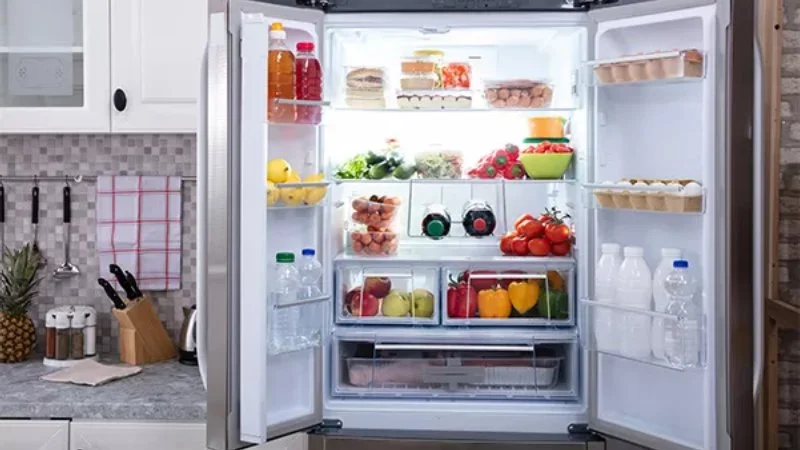What Number Should a Fridge Be On?
Refrigerators are a vital part of every household in the UK, ensuring that food stays fresh, reducing waste, and maintaining safety by preventing the growth of harmful bacteria. Many people may not know the ideal temperature setting for their fridge, which can lead to food spoiling faster or energy being wasted. If you’ve ever wondered, “What number should my fridge be on?” this guide will help you understand the best settings for optimal food storage.
Understanding Refrigerator Temperature Settings
Most modern fridges come with a temperature dial or digital controls that allow you to adjust the cooling level. The dial often ranges from 1 to 7 or 1 to 9, with lower numbers representing warmer settings and higher numbers making the fridge colder. But what’s the best setting? Why does it matter, and how can you ensure your food stays fresh without freezing or spoiling?
Here’s what each number on the dial typically represents:
- Low settings (1, 2, or 3) correspond to warmer fridge temperatures, suitable when the fridge is relatively empty or for non-perishable items.
- Mid-range settings (4 or 5) usually offer the best balance between energy efficiency and food preservation, keeping temperatures cold enough to prevent bacterial growth without using excess energy.
- High settings (6, 7, or higher) make the fridge colder, which may be necessary during warm summer months or when storing a lot of items like dairy or meat.
What Is the Ideal Temperature for Your Fridge?
In the UK, the Food Standards Agency (FSA) recommends keeping your fridge at or below 5°C (41°F) to prevent bacteria like salmonella and E. coli from growing and causing foodborne illnesses. However, most experts suggest that the ideal fridge temperature is between 3°C and 5°C (37°F to 41°F). For freezers, the recommended setting is -18°C (0°F) to keep food safely frozen.
Factors to Consider When Setting Your Fridge Temperature
While the recommended temperature range provides a good guideline, several factors can affect how cold your fridge should be:
1. Amount of Food in Your Fridge
-
- A fully stocked fridge needs to work harder to maintain the correct temperature. If your fridge is packed, you may need to turn the dial to a higher number to ensure proper air circulation and cooling.
- On the other hand, if your fridge is mostly empty, you can set it to a lower number and still maintain freshness without using too much energy.
2. Seasonal Variations in the UK
-
- During the warm summer months, you might need to set your fridge to a colder setting (5 or 6 on a 1-7 scale) to offset the higher ambient temperatures in your kitchen. This will help prevent food from spoiling due to warmer conditions.
- In the cooler winter months, your fridge won’t have to work as hard, so you can often lower the setting to 3 or 4, maintaining the right temperature without overcooling.
3. Age and Efficiency of the Fridge
-
- Older fridges may struggle to maintain consistent temperatures, even if the dial is set correctly. If your fridge is more than 10-15 years old, it may not cool as efficiently as a newer model, so you may need to set the dial to a higher number to maintain food safety.
- Newer fridges with digital thermostats allow you to fine-tune the temperature settings more precisely, often saving energy while keeping food fresh.
4. Location of the Fridge in Your Home
-
- If your fridge is in a warm environment, like next to an oven or in a conservatory, you may need to set it to a colder number to keep the temperature at a safe level. Ensure that your fridge isn’t exposed to direct sunlight, as this can affect its cooling efficiency.
How to Measure Your Fridge’s Temperature
Many fridges do not show the exact temperature, especially older models with a dial system. If you’re unsure whether your fridge is set correctly, grab a fridge thermometer to quickly and affordably check the accuracy.
Here’s how to measure the temperature:
- Place the thermometer in the center of the fridge, away from the back and any air vents.
- Leave it for 24 hours without opening the door too frequently to get an accurate reading.
- If the temperature is above 5°C (41°F), adjust the dial to a higher number. If the fridge is colder than 3°C (37°F), you may want to lower the setting to prevent freezing.
Signs Your Fridge Temperature Is Incorrect
Even without a thermometer, some signs indicate your fridge temperature may need adjusting:
- Food spoiling quickly: If milk, vegetables, or other perishable items are going off before their use-by dates, it may be a sign that the fridge is too warm.
- Frost build-up: If ice is forming on the back wall or food is freezing, your fridge might be set too cold, especially in the colder months.
- Odd smells: Spoiling food gives off strong odors, indicating that the fridge is not keeping items at a safe temperature.
Energy Efficiency and Environmental Considerations
Setting your fridge too cold can not only risk freezing your food, but it also uses more electricity, driving up energy bills unnecessarily. Refrigerators are one of the most energy-hungry appliances in the home, so setting them to the correct temperature is vital for both food preservation and energy efficiency.
. To further improve energy efficiency, make sure:
- The fridge door seals properly to prevent warm air from entering.
- You only open the door when necessary and close it promptly to maintain the cool temperature.
- Avoid placing hot food directly into the fridge, as this makes the fridge work harder to cool down.
Conclusion: Finding the Perfect Setting
So, what number should your fridge be on? For most households in the UK, a mid-range setting of 3 or 4 on a 1-7 dial, or 4 or 5 on a 1-9 dial, will maintain the recommended temperature of 3°C to 5°C. However, factors like the amount of food stored, the season, and the efficiency of your fridge may require you to make minor adjustments.
By regularly checking the temperature and ensuring the fridge operates efficiently, you’ll keep your food fresher for longer, save money on your energy bills, and reduce your environmental footprint. If you have any questions about that, please visit our Contact Us page.

